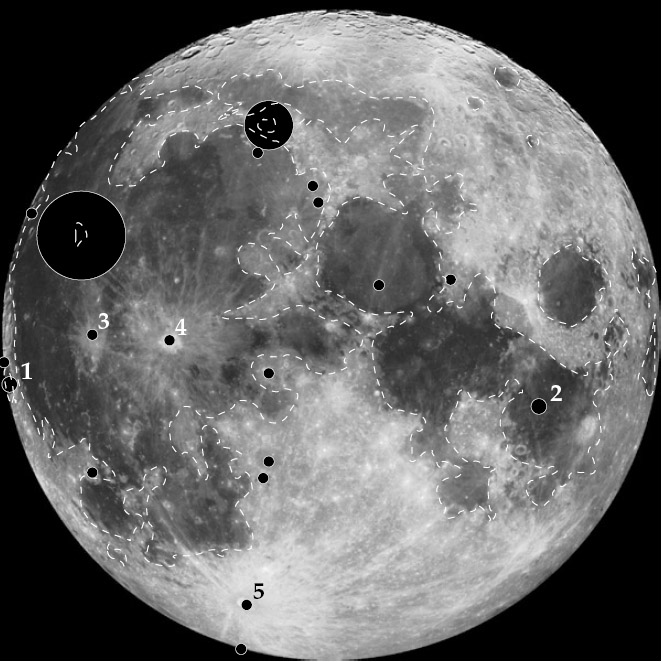
TLP locations from Transient Lunar Phenomena: Regularity and Reality
Transient Lunar Phenomenon (TLP) have been the holy grail for some observers of the Moon. During the 18th and 19th centuries various lunar observers reported changes that they thought proved that the Moon is not dead. The flurry of international excitement over Linne in the 1860s was just the most visible of many similar incidents of exceedingly unlikely observations of change. During the last few years the Geological Lunar Research group has convincingly explained some classic TLP observations as accidents of viewing geometry, and the general trend has been to dismiss TLPs. Now a professor at a prestigious American university has reopened the question with a series of as yet unpublished research papers that conclude that ~80% of TLPs were real. He also proposes an explanation that seems unlikely in the extreme. Arlin Crotts is a professor of astronomy at Columbia University who specializes in observational cosmology. Somehow he has become captivated by TLP and has conducted sophisticated statistical studies of the classic Cameron and Middlehurst TLP catalogs. He also links the locations of TLPs with moonquakes and radon gas emissions detected by Apollo and Lunar Prospector. Crotts suggests that escaping gases might explosively loft a cloud of regolith above the surface, creating the temporary change of a TLP. This is a reasonable variant of earlier ideas. But he further speculates that if some of the gas is water vapor then it could become ice or interact with regolith particles in complex ways. Wait a minute! One of the fundamental discoveries of Apollo is that Moon rocks are dry, totally lacking water. Recent studies have suggested that there may have been extraordinarily small amounts of water in some lunar rocks, but Crotts proposes that there could be an ice layer a kilometer wide under Aristarchus and other TLP sites. This seems crazy, especially since Crotts arrives at lunar ice as a mechanism to explain a phenomenon that may not be real. It will be very interesting over the next few months to see how the professional lunar science community responds to this idea. In the meantime, Crotts and colleagues have built a specialized telescope in the Andes to search for TLPs more intensely than ever before.
Yesterday's LPOD: The Blue Square Challenge
Tomorrow's LPOD: An Author Where He Belongs
COMMENTS?
Register, Log in, and join in the comments.



